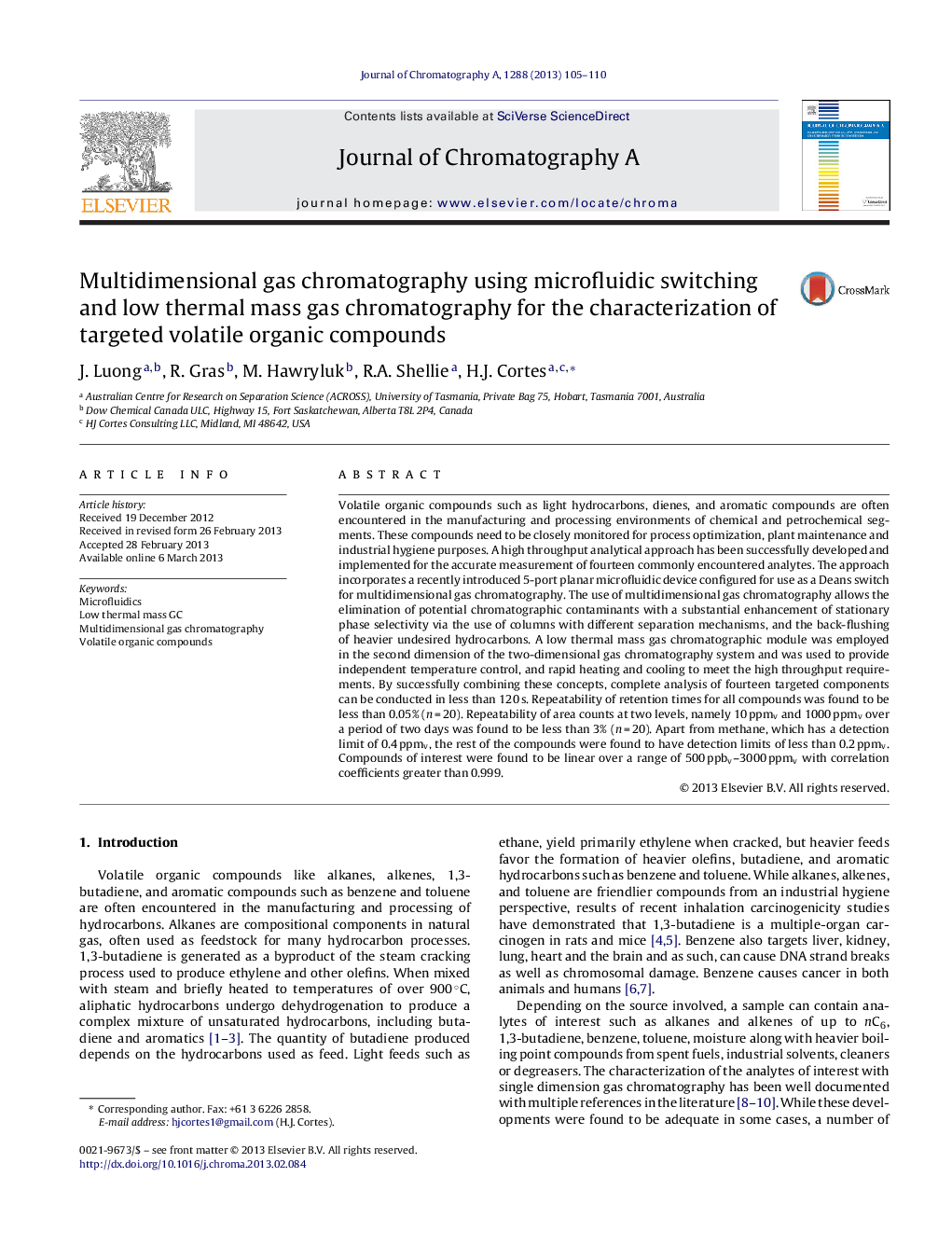| Article ID | Journal | Published Year | Pages | File Type |
|---|---|---|---|---|
| 1200288 | Journal of Chromatography A | 2013 | 6 Pages |
•Characterization of 14 common hydrocarbons and aromatic hydrocarbons is performed within 2 min.•The system employs low thermal mass-MDGC (Deans switch) with a low thermal mass planar microfluidic device.•A novel gas injection system – large volume gas injection system (LVGIS) was also utilized.
Volatile organic compounds such as light hydrocarbons, dienes, and aromatic compounds are often encountered in the manufacturing and processing environments of chemical and petrochemical segments. These compounds need to be closely monitored for process optimization, plant maintenance and industrial hygiene purposes. A high throughput analytical approach has been successfully developed and implemented for the accurate measurement of fourteen commonly encountered analytes. The approach incorporates a recently introduced 5-port planar microfluidic device configured for use as a Deans switch for multidimensional gas chromatography. The use of multidimensional gas chromatography allows the elimination of potential chromatographic contaminants with a substantial enhancement of stationary phase selectivity via the use of columns with different separation mechanisms, and the back-flushing of heavier undesired hydrocarbons. A low thermal mass gas chromatographic module was employed in the second dimension of the two-dimensional gas chromatography system and was used to provide independent temperature control, and rapid heating and cooling to meet the high throughput requirements. By successfully combining these concepts, complete analysis of fourteen targeted components can be conducted in less than 120 s. Repeatability of retention times for all compounds was found to be less than 0.05% (n = 20). Repeatability of area counts at two levels, namely 10 ppmv and 1000 ppmv over a period of two days was found to be less than 3% (n = 20). Apart from methane, which has a detection limit of 0.4 ppmv, the rest of the compounds were found to have detection limits of less than 0.2 ppmv. Compounds of interest were found to be linear over a range of 500 ppbv–3000 ppmv with correlation coefficients greater than 0.999.
